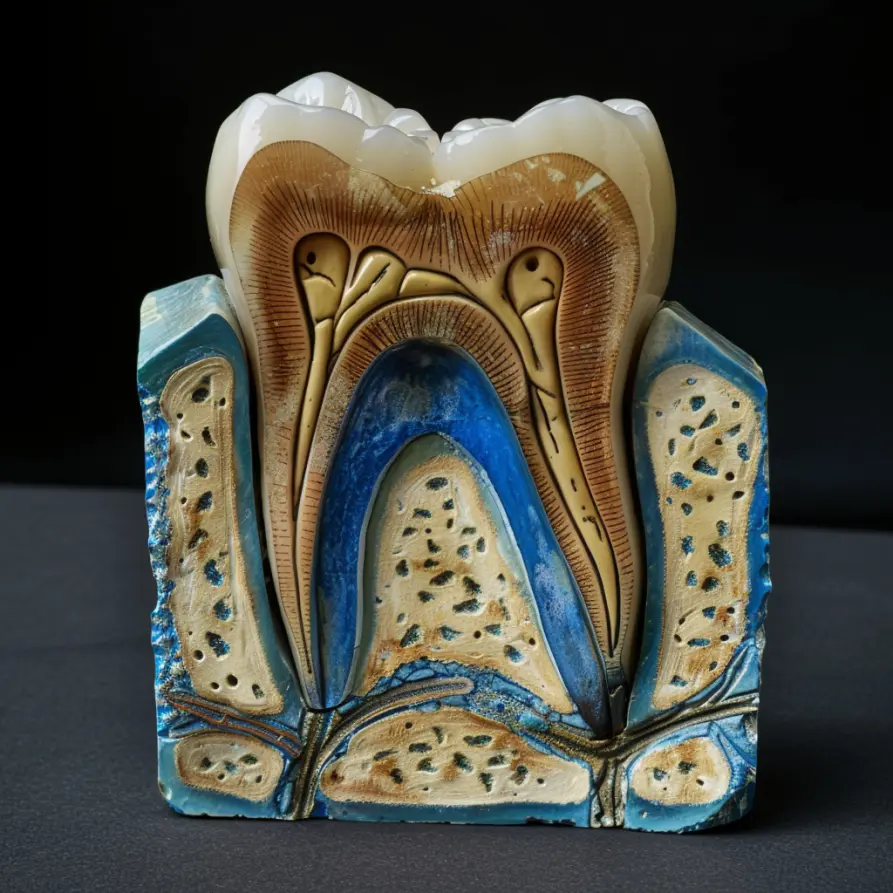Tooth enamel is integral to oral health, acting as the robust protective layer covering the outer surface of each tooth. It is renowned for its hardness, primarily composed of hydroxyapatite, a crystalline structure formed from calcium and phosphate. This remarkably durable substance is what allows teeth to handle daily functions such as chewing, and it plays a crucial role in safeguarding teeth from decay. However, despite its resilience, enamel is not impervious to damage and erosion over time.
Maintaining the integrity of tooth enamel is a significant concern for both dental professionals and individuals alike. Dentists emphasize the importance of preserving enamel through proper hygiene practices and lifestyle choices. Strategies include routine cleaning, fluoride use, and dietary modifications to avoid acidic foods and beverages that can weaken enamel. Protecting enamel not only contributes to the longevity of teeth but also to their aesthetic appearance.
The quest to understand and maintain the longevity of tooth enamel has led researchers to explore its composition deeply. Advances in dental science seek to uncover the mechanisms behind enamel’s long-lasting nature and how it manages to withstand the various stresses placed upon it throughout a lifetime. Insights into the structure and biology of enamel are essential in developing improved dental treatments and preventative strategies, ensuring that enamel continues to fulfill its critical role in oral health.

Fundamentals of Tooth Enamel
Tooth enamel is the hard, protective exterior of teeth, playing a critical role in dental health. Understanding its composition, connection to overall health, and potential threats is essential for maintaining its integrity.
Composition and Function
Tooth enamel is primarily composed of hydroxyapatite crystals, a type of calcium phosphate mineral that makes it the hardest substance in the human body. It serves as the first line of defense against daily wear and the onslaught of acidic substances. Hydroxyapatite crystalline structure endows enamel with the strength to withstand biting forces, while a small percentage of other minerals and water imbue it with some necessary flexibility.
The pH level in the mouth can influence the stability of these crystals; an optimal balance is essential to preserving enamel’s protective function.
Enamel and Overall Health
Enamel’s health reflects the state of one’s overall oral hygiene and can impact general wellbeing. It forms an impenetrable barrier that protects the inner layers of teeth, including the sensitive dentin, from exposure to harmful bacteria and temperature extremes. Maintaining a robust enamel layer is pivotal, as compromised enamel can lead to tooth decay, sensitivity, and more severe dental complications.
Healthy enamel also contributes to a balanced oral pH, which is crucial in the human body’s fight against pathogenic invasions, as it can prevent harmful bacteria from thriving in the oral cavity.
Common Threats to Enamel Integrity
Several factors can threaten the integrity of enamel, including:
- Diet: Regular consumption of acidic beverages and sugary foods can lead to demineralization, a softening of enamel that can progress to enamel erosion.
- Aging: Over time, natural wear and tear occur, which can be accelerated by habits like bruxism (teeth grinding).
- Erosion: Besides dietary acids, gastric acid due to conditions like reflux can contribute to enamel breakdown.
Effective oral hygiene habits, such as proper brushing and flossing, coupled with a conscientious diet, are vital in combating these threats and preserving enamel for a lifetime.

Strategies for Preserving Enamel
Maintaining strong tooth enamel is essential for dental health, offering a defense against decay and sensitivity. Effective strategies encompass diligent oral hygiene, dietary adjustments, and regular professional dental care.
Optimal Oral Hygiene Practices
Good oral hygiene practices are the first line of defense in preserving tooth enamel. Regular brushing with fluoride toothpaste twice a day and daily flossing remove harmful plaque and bacteria that can erode enamel. Additionally, the use of oral hygiene products containing xylitol may help to neutralize the pH level in the mouth, enhancing saliva’s natural remineralization process.
- Brush teeth at least twice a day using a fluoride toothpaste
- Floss daily to remove plaque between teeth
- Use mouthwash to reach areas not easily accessed by brushing and flossing
- Consider oil pulling to reduce bacteria and strengthen gums.
Dietary Considerations for Strong Enamel
What one eats and drinks plays a significant role in the health of their enamel. High-acid foods and beverages, like fruit drinks and soda, can wear down enamel over time. Therefore, it’s crucial to limit these and include calcium-rich foods and Vitamin D in the diet, which support strong teeth.
- Limit acidic foods and drinks to reduce the risk of enamel erosion
- Consume calcium and Vitamin D-rich foods to support enamel strength
Professional Care and Cosmetic Approaches
Visiting the dentist for regular dental check-ups is vital for maintaining enamel. Dentists can provide professional cleanings, identify early signs of enamel wear, and recommend treatments such as veneers or crowns to protect and restore enamel. Cosmetic dentistry, like teeth whitening, should be approached with caution to avoid potential damage to enamel.
- Schedule regular dental check-ups for professional cleaning and early detection of issues
- Discuss protective options like veneers and crowns for weakened enamel
- Seek a dentist’s guidance before undergoing any cosmetic dentistry procedures

